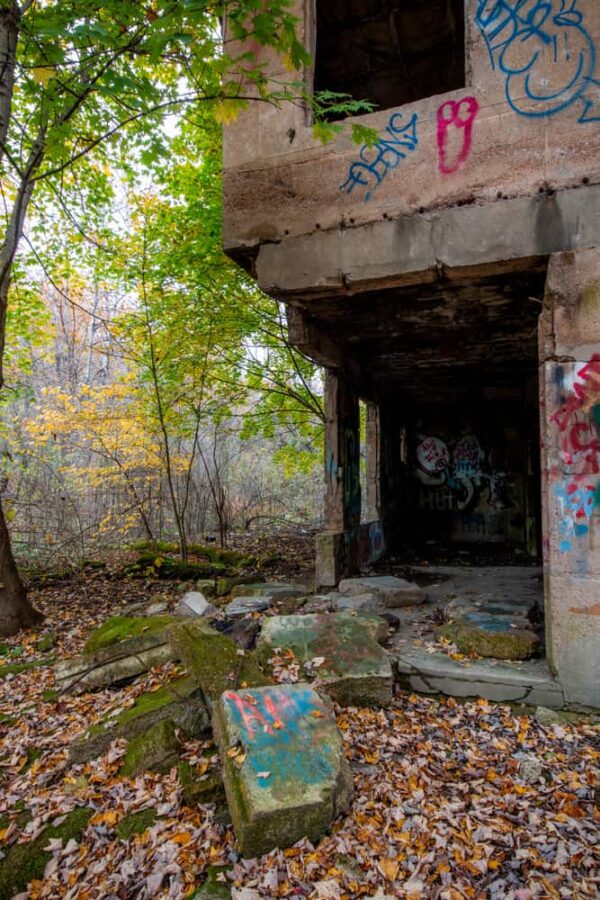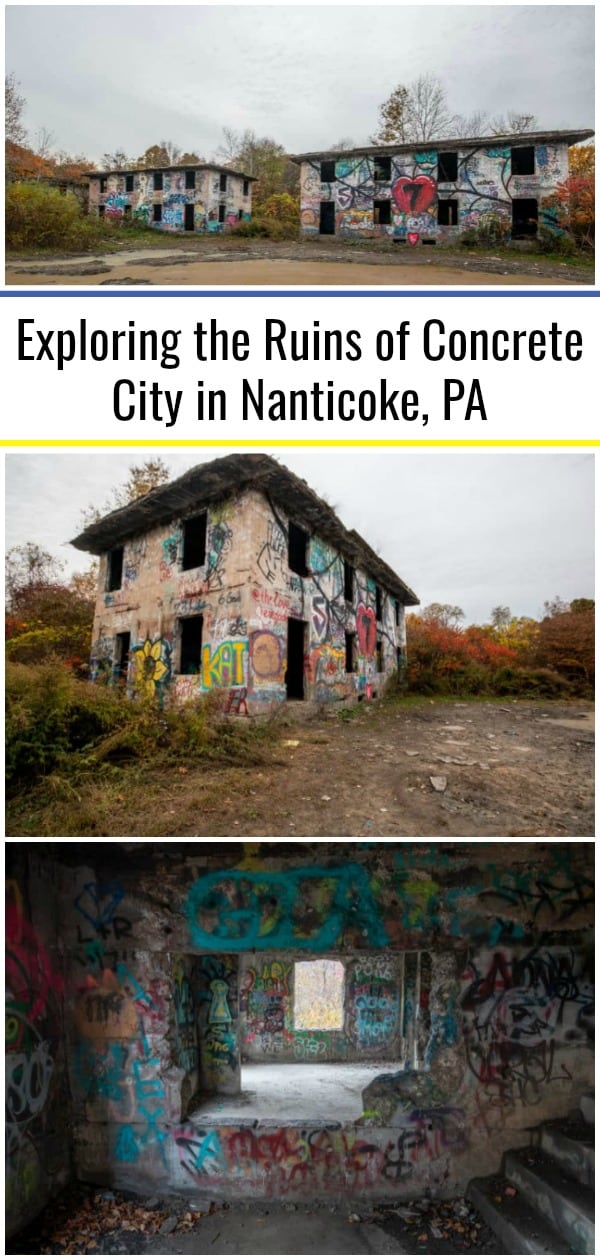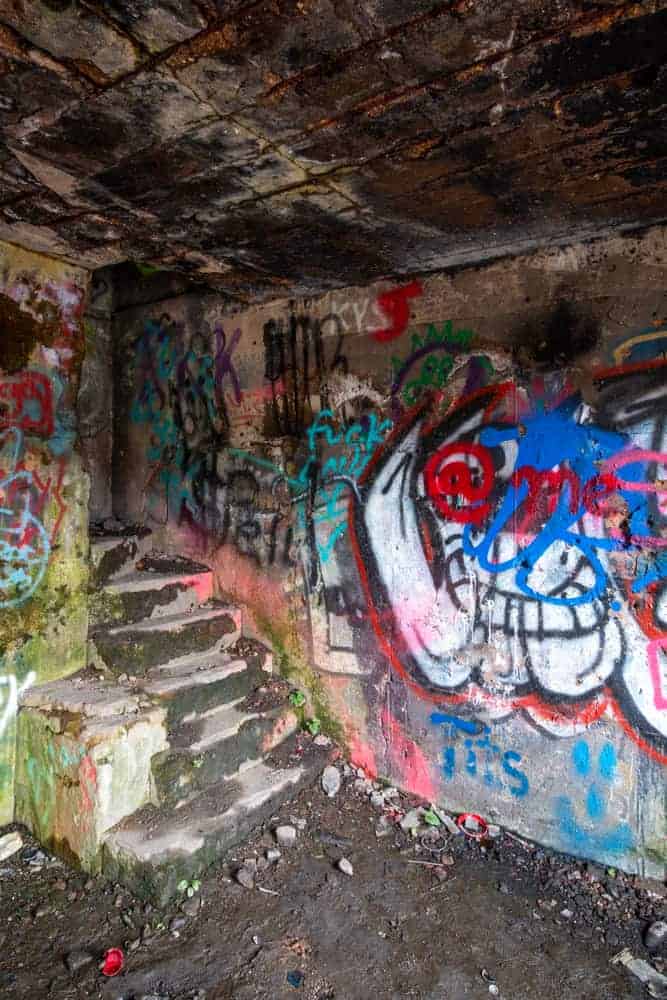You’ve probably heard of abandoned places that feel like they’re straight out of a horror movie, but Concrete City in Nanticoke, PA is a different kind of ghost town. This concrete marvel has a story that’s as fascinating as it is haunting. Imagine walking through streets lined with crumbling concrete homes, each whispering tales of a bygone era. Concrete City isn’t just an abandoned site; it’s a time capsule of industrial America.
This unique location, nestled in northeastern Pennsylvania, is more than just a tourist attraction. It’s a testament to human ingenuity and the rise and fall of industrial progress. Built in the early 1900s as a housing project for coal miners, Concrete City was designed to revolutionize living conditions in mining towns. But, like many grand plans, it didn’t quite pan out as intended. Today, Concrete City stands as a reminder of both human ambition and the fragility of progress.
As we dive deeper into the history, mystery, and allure of Concrete City, you’ll discover why it’s not just a pile of concrete but a symbol of America’s industrial past. So, buckle up, because we’re about to take you on a journey through the streets of Concrete City, Nanticoke, PA.
Read also:Vnc Security Best Practices Your Ultimate Guide To Safe Remote Access
Table of Contents
- The History of Concrete City
- Where Is Concrete City Located?
- The Unique Architecture of Concrete City
- Why Was Concrete City Abandoned?
- The Current State of Concrete City
- Concrete City as a Tourist Destination
- Environmental Impact of Concrete City
- Urban Exploration in Concrete City
- Efforts to Preserve Concrete City
- The Future of Concrete City
The History of Concrete City
Concrete City’s story begins in the early 20th century when the Delaware, Lackawanna & Western Railroad Company decided to build affordable housing for coal miners. The year was 1911, and the world was on the cusp of significant industrial advancements. The company envisioned a futuristic housing development made entirely of concrete, a material that promised durability and cost-effectiveness.
Back then, concrete was seen as the material of the future. It was fireproof, waterproof, and could withstand the harsh conditions of mining towns. The project was ambitious, and the houses were designed to be modern and efficient. However, the dream didn’t last long. By the 1920s, the houses were already showing signs of deterioration, and the residents began moving out. The decline of the coal industry only accelerated the abandonment of Concrete City.
The Vision Behind Concrete City
The original plan for Concrete City was to create a model community that would improve the living conditions of coal miners. The houses were designed with innovative features for the time, including indoor plumbing and central heating. But despite these advancements, the houses failed to meet the expectations of the residents. The concrete walls were cold and damp, making the houses uncomfortable to live in.
Where Is Concrete City Located?
Nanticoke, Pennsylvania, is a small city located in Luzerne County, about 15 miles south of Wilkes-Barre. Concrete City sits on the outskirts of Nanticoke, surrounded by wooded areas and industrial remnants. The location was chosen for its proximity to coal mines, making it convenient for miners to commute to work.
Despite its remote location, Concrete City has gained popularity among urban explorers and history enthusiasts. The site is easily accessible by car, and many visitors come to explore the ruins and learn about its fascinating history. The surrounding area is rich in industrial history, with remnants of old coal mines and railroad tracks still visible today.
The Unique Architecture of Concrete City
The architecture of Concrete City is what makes it stand out from other abandoned places. The houses were built using a unique method called the “Monolithic Concrete System,” which allowed for the construction of entire buildings in a single pour. This method was supposed to make the houses more durable and cost-effective, but it turned out to be a double-edged sword.
Read also:Best Pool Tables Your Ultimate Guide To Finding The Perfect Table
While the concrete walls were strong, they were also prone to cracking and water damage. Over time, the houses began to deteriorate, and the harsh winters of northeastern Pennsylvania only worsened the situation. Today, the ruins of Concrete City are a testament to the limitations of early 20th-century construction techniques.
Key Features of Concrete City Houses
- Concrete walls that were designed to be fireproof and waterproof
- Indoor plumbing and central heating, which were rare at the time
- Innovative design that maximized space and functionality
- Uniform appearance, with all houses having the same layout and design
Why Was Concrete City Abandoned?
The decline of Concrete City was a combination of factors. The houses themselves were flawed, with issues like water damage and poor insulation making them uncomfortable to live in. But the larger problem was the decline of the coal industry. As coal mining became less profitable, the demand for housing in mining towns decreased. By the 1930s, most of the residents had moved out, and Concrete City was left to decay.
Efforts were made to repurpose the site, including using it as a military training ground during World War II. However, none of these efforts were successful, and Concrete City remained abandoned. Today, it stands as a reminder of both the successes and failures of industrial America.
The Current State of Concrete City
Today, Concrete City is a hauntingly beautiful place. The ruins of the concrete houses are surrounded by overgrown vegetation, creating a surreal atmosphere. Some of the houses are still standing, albeit in a state of disrepair, while others have collapsed entirely. The site is a popular destination for urban explorers and photographers, who come to capture its unique beauty.
Despite its popularity, Concrete City is not officially open to the public. The site is privately owned, and trespassing is technically illegal. However, many visitors choose to explore the ruins anyway, drawn by the allure of its mysterious past. The owners have occasionally considered selling the land, but so far, no plans have been made to develop the site.
Concrete City as a Tourist Destination
While Concrete City is not officially a tourist destination, it has become a popular spot for adventure seekers. Visitors come from all over to explore the ruins and learn about its history. The site offers a unique glimpse into America’s industrial past, and its eerie beauty has captured the imagination of many.
For those who want to visit Concrete City, it’s important to remember that the site is not maintained. There are no facilities, and the ruins can be dangerous. Visitors should exercise caution and respect the property by not littering or damaging the structures. Despite these challenges, Concrete City remains a fascinating place to visit for those interested in history and urban exploration.
Tips for Visiting Concrete City
- Be respectful of the property and don’t trespass unnecessarily
- Wear sturdy shoes and bring water, as the site is not maintained
- Take plenty of photos, but be mindful of the fragile state of the ruins
- Be aware of local laws and regulations regarding abandoned sites
Environmental Impact of Concrete City
The environmental impact of Concrete City is a growing concern. The site is surrounded by sensitive ecosystems, and the deterioration of the concrete structures could pose a risk to local wildlife. Concrete contains chemicals that can leach into the soil and water, potentially harming plants and animals. Additionally, the overgrowth of vegetation could lead to soil erosion and other environmental issues.
Efforts are being made to assess the environmental impact of Concrete City and find ways to mitigate any potential harm. Conservationists and local authorities are working together to develop a plan that balances preservation with environmental protection. While the site may never be fully restored, steps are being taken to ensure that it doesn’t become a liability for the surrounding area.
Urban Exploration in Concrete City
Urban exploration, or “urbex,” is the practice of exploring abandoned places like Concrete City. For many enthusiasts, urbex is a way to connect with history and experience places that are off the beaten path. Concrete City is a popular urbex destination, thanks to its unique architecture and eerie atmosphere.
Exploring Concrete City requires a certain level of caution. The ruins are unstable, and visitors should be aware of potential hazards like falling debris and uneven surfaces. It’s also important to respect the property and not damage the structures. While urbex can be a rewarding experience, it’s essential to approach it responsibly and with respect for the site’s history.
Efforts to Preserve Concrete City
There have been several efforts to preserve Concrete City over the years. In the 1990s, a local preservation group attempted to restore some of the houses, but the project was eventually abandoned due to lack of funding. More recently, there have been discussions about turning the site into a historical park, but these plans have yet to come to fruition.
Preserving Concrete City is a complex issue. On one hand, the site is a valuable piece of history that deserves to be protected. On the other hand, the cost of restoration and maintenance is significant, and there are concerns about the environmental impact of the ruins. Despite these challenges, many people believe that Concrete City is worth saving, and efforts to preserve it continue.
The Future of Concrete City
The future of Concrete City remains uncertain. While there are no immediate plans to develop the site, its popularity as a tourist destination suggests that it could have a brighter future. With the right funding and support, Concrete City could be transformed into a historical park or museum, preserving its history for future generations.
In the meantime, visitors continue to flock to Concrete City, drawn by its haunting beauty and fascinating history. Whether it remains an abandoned ruin or becomes a preserved historical site, Concrete City will always be a symbol of America’s industrial past and the resilience of its people.
Final Thoughts
Concrete City, Nanticoke, PA, is more than just an abandoned place. It’s a testament to human ambition, the rise and fall of industrial America, and the enduring power of history. As we’ve explored its history, architecture, and current state, it’s clear that Concrete City has much to teach us about the past and the future.
If you’ve been inspired by this article, why not plan a visit to Concrete City? Or, if you’re interested in learning more about abandoned places, check out our other articles on similar topics. Whatever you do, remember to respect the site and its history, and always explore responsibly.
So, what are you waiting for? Go out there and discover the mysteries of Concrete City for yourself!



